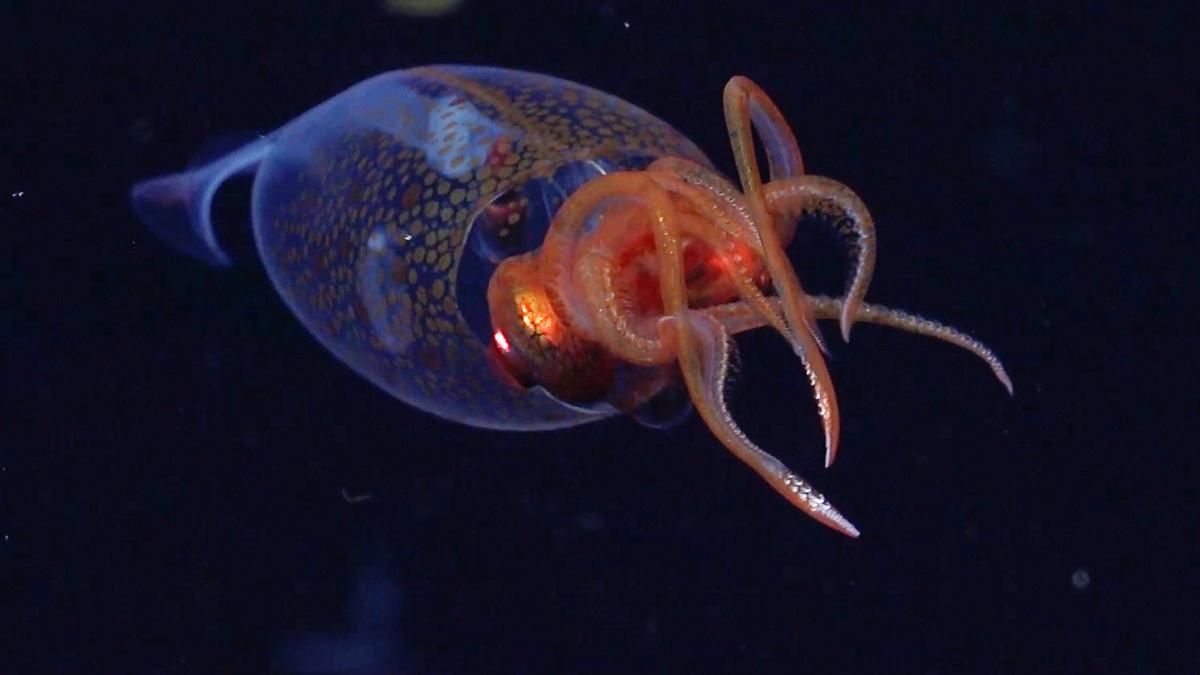Colossal Squid

- 19 Mar 2025
In News:
In a landmark moment for marine biology, scientists have captured the first-ever footage of a colossal squid in its natural deep-sea habitat. The sighting was made by an international research team using a remotely operated submersible in the South Atlantic Ocean, near the South Sandwich Islands, and was announced by the Schmidt Ocean Institute in April 2025.
About the Colossal Squid
- Scientific Name:Mesonychoteuthishamiltoni
- Distribution: Found in the cold, deep waters of the Southern Ocean near Antarctica
- IUCN Status:Least Concern
The colossal squid is among the largest and most elusive invertebrates on Earth. The filmed specimen was a juvenile about 30 cm (1 foot) long, observed at a depth of 600 meters. However, fully grown adults can reach up to 7 meters (23 feet) in length and weigh around 500 kg.
Key Features
- Body: Tube-shaped and soft-bodied, similar to octopuses but far more massive
- Arms & Tentacles: Equipped with suckers and sharp, swivelling hooks — a feature unique to the species
- Eyes: Possess the largest eyes known in the animal kingdom, aiding visibility in the pitch-dark ocean depths
- Coloration:
- Juveniles are nearly transparent, giving them a glassy, ghost-like appearance
- Adults become opaque, with dark red or purple hues and muscular limbs
Scientific Importance & Recent Discovery
- This deep-sea sighting comes almost a century after the species was first identified, and confirms long-standing hypotheses based on carcasses found in the stomachs of whales and seabirds.
- The team is now testing improved camera systems to attempt capturing footage of an adult colossal squid in action.
